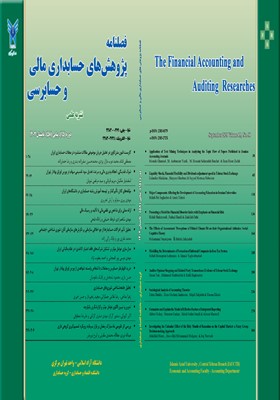-
-
List of Articles
-
Open Access Article
1 - Application of Text Mining Techniques in Analyzing the Topic Flow of Papers Published in Iranian Accounting Journals
Mostafa Ghannad Mohammad Arabmazar Yazdi Mohammad Hossein Safarzadeh Bandari Reza HesarZadeh -
Open Access Article
2 - Liquidity Shock, Financial Flexibility and Dividends adjustment speed in Tehran Stock Exchange
Esfandiar Malekian Maryam Ghorbani Seyyed Morteza Nabavian -
Open Access Article
3 - Major Components Affecting the Development of Accounting Education in Iranian Universities
Mahdi Piri Sagharloo Arash Tahriri -
Open Access Article
4 - Presenting a Model for Financial Disorder Index with Emphasis on Financial Risk
Mehdi Shahmoradi Farhad Hanifi Zadallah Fathi -
Open Access Article
5 - The Effects of Accountants' Perceptions of Ethical Climate Fit on their Organizational Attitudes: Social-Cognitive Theory
Mohammad Nazaripour babak zakizadeh -
Open Access Article
6 - Modelling the Determinants of Formation of Informal Companies in Iran Tax System
Mehdi Mousapour Lafmejani Ahmad Yaghoubnehad -
Open Access Article
7 - Auditor Opinion Shopping and Related Party Transactions: Evidence of Tehran Stock Exchange
hasan yari Mahmoud Shahbakhsh Rafik Baghomian -
Open Access Article
8 - Sociological Analysis of Accounting Theories
Zahra Madahi Reza Gholami Jamkarani Majid Zakjirdat Hassan Kheiri -
Open Access Article
9 - Formulate and Explain the Model of Effective Factors of Integrated Reporting
Akbar Givkey Mansour Garkaz Mehdi Safari Grayli alireza matoufi -
Open Access Article
10 - Investigating the Calendar Effect of the Holy Month of Ramadan on the Capital Market: a Fuzzy Group Decision-making Approach
Abdollah Noori Ata-o-llah Mohammadi Molgarni Iraj Norvesh
-
The rights to this website are owned by the Raimag Press Management System.
Copyright © 2021-2025







